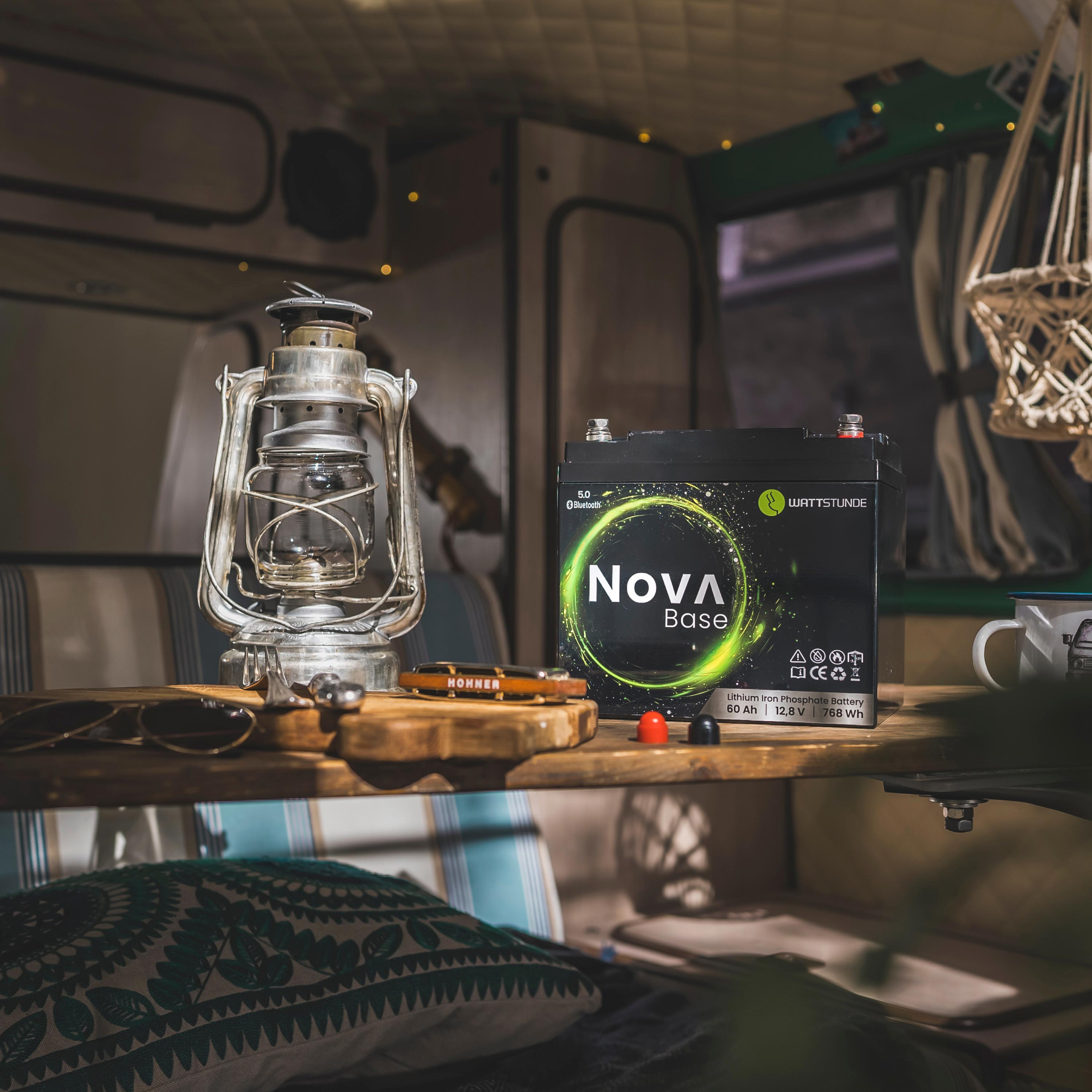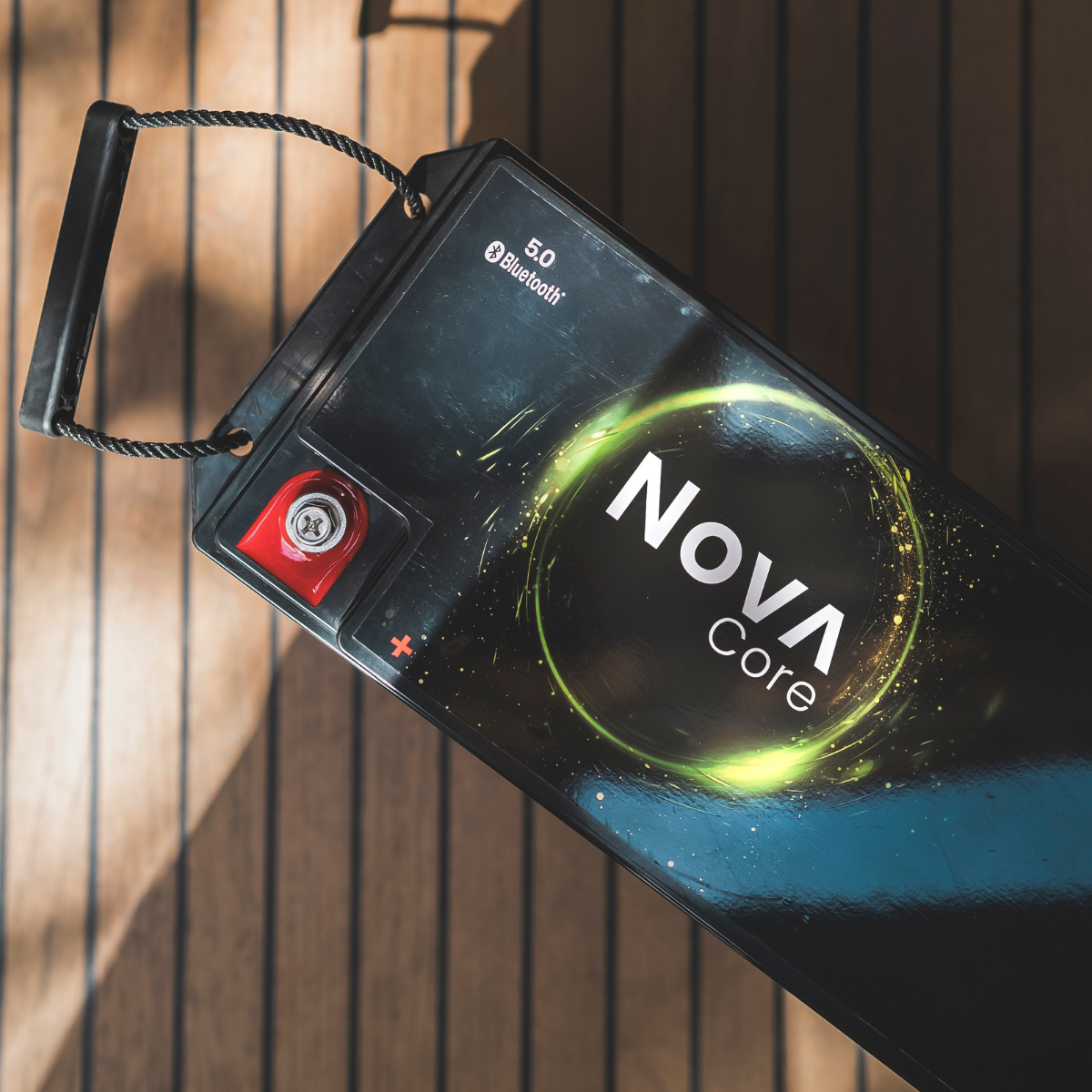In the first two parts of our series "Self-Sufficient for the Season," we covered the basics of generating your own power in your vehicle and choosing the right auxiliary battery . In this third part, we'll focus on how to generate this energy efficiently and reliably. The emphasis here is on selecting the right solar panels and charging technology, as these form a fundamental component for an independent power supply on the go.
We explain the key differences between monocrystalline and polycrystalline solar modules, provide guidance on the required solar power and which charge controller – MPPT or PWM – is suitable for which application.
What types of solar modules are there? Monocrystalline vs. polycrystalline
The solar market offers various types of solar modules, and the differences may not be immediately apparent to beginners. We'll explain – two technologies in particular dominate module design: monocrystalline and polycrystalline Solar modules. Both technologies are based on silicon as a semiconductor material, but differ in their manufacturing process, efficiency, and application. A closer look at the differences helps in making the right decision for each specific application.
Monocrystalline solar modules – efficient and space-saving
Monocrystalline modules consist of a single, high-purity silicon crystal. Manufacturing is more complex, but the result is a very powerful module with high efficiency. These modules are mostly black or dark grey and are characterized by a homogeneous cell structure out of.
✅ Advantages:
- High efficiency (up to 22%): Ideal for limited space
- Good performance in low light: Reliable even in the morning, evening or under cloudy skies.
- Long lifespan: Particularly robust due to high-quality workmanship. Modern, uniform design: Often preferred for aesthetic reasons.
Areas of application:
- Vehicle roofs (campers, motorhomes, boats)
- Balcony power plants
- Applications with limited available space and high power requirements
Monocrystalline solar modules like the WATTSTUND SOLA Frame Series They are therefore the first choice when efficiency and longevity are paramount.
Polycrystalline solar modules – proven and cost-efficient
Polycrystalline modules are made from multiply crystallized silicon. This results in a unique cell structure. grainy and usually shimmers bluish . The manufacturing process is simpler, which is reflected in a lower price reflects.
✅ Advantages:
- More cost-effective to purchase
- Solid performance under standard conditions
- Proven technology with many years of market maturity
In direct comparison to monocrystalline modules:
- Slightly lower efficiency (usually 15–18%)
- Larger area required for the same performance compared to monocrystalline modules.
- More sensitive at higher temperatures
Areas of application:
- Stationary systems with sufficient space (e.g. garden sheds, garage roofs, permanently installed off-grid systems)
- Budget-oriented applications without space limitations
The choice depends on the application.
For mobile applications such as campers, boats or off-road vehicles We recommend monocrystalline modules because they are More performance per area despite limited space They deliver power and operate more reliably under changing light conditions. So if you want to start the season self-sufficiently with your vehicle, then monocrystalline modules are the right choice! Polycrystalline modules are still an economically attractive solution if Plenty of space available and the budget plays a bigger role.
Framed vs. flexible solar panels – Which design suits your needs?

Framed solar modules – robust & powerful
Framed modules consist of a sturdy glass or glass/glass construction, encased in an aluminum frame. This design offers maximum stability and durability.
✅ Advantages:
- Very robust – ideal for permanent mounting on vehicle roofs or in fixed systems
- High power output thanks to optimal cell design and improved cooling
- Resistant to wind, weather and mechanical stress
- Long-term investment with a long lifespan
The WATTSTUNDE SOLA Frame Series is an example of high-quality, framed modules that are particularly suitable for anyone looking for a durable, high-performance solution.
Flexible solar modules – lightweight & adaptable
Flexible modules consist of lightweight, bendable materials without glass coverings or fixed frames. They can be installed on curved surfaces or in locations with special requirements.
✅ Advantages:
- Extremely light and flat – perfect for sensitive or weight-optimized roofs
- Easy installation – often possible without drilling (e.g., gluing)
- Unobtrusive design – integrates well into the vehicle's appearance
- Partially accessible, ideal for boats
The WATTSTUND SOLA Flex Series It is ideally suited for applications with limited load capacity or irregular surfaces, for example on campers, vans, boats or expedition vehicles.
Choose the design according to its intended use
Framed modules are the right choice when it comes to maximum performance, stability and durability arrives. Flexible modules are a good option if Weight, freedom of assembly and adaptability be the main focus.
The right combination of technology and design is crucial to getting the most out of solar energy – tailored to your vehicle, your everyday life and your energy needs.
How much solar power do I need?
This question is directly related to your individual electricity consumption. A brief overview of typical energy consumption will help you estimate it. So, to find out how much Solar power (Wp) You need, you must first... daily energy consumption Calculate in watt-hours (Wh). A simple calculation helps with this – let's look at the formula and an example consumer again. Part 2 this blog series.
Formula for calculating consumption:
Power (W) x Operating time (h) = Consumption in watt-hours (Wh)
Step 1: Determine daily electricity consumption
Write down which devices you use and for how long each day:
| Device | Power consumption (in watts) | Usage duration/day | Consumption/day (in Wh) |
| LED light | 10 W | 5 h | 50 Wh |
| Compressor refrigerator | 50 W | 12 h | 600 Wh |
| laptop | 60 W | 3 h | 180 Wh |
| Kettle | 1500 W | 5 min | 125 Wh |
👉 Total daily consumption: ~955 Wh
Step 2: Conversion to solar power
A solar module does not supply electricity around the clock, but only when exposed to sunlight – and even then, the output fluctuates depending on the time of day, weather and orientation.
As a rule of thumb: 100 Wp solar module output generate in Central Europe on average about 300–500 Wh per day.
This depends on, among other things:
- Season (summer vs. spring/autumn)
- Location
- Module orientation & tilt
- Shading
- Quality of the module and charge controller
Step 3: Calculate power
As determined above, the daily consumption is approximately... 955 Wh per day.
A 100 Wp module generates (realistically calculated) about 350 Wh/day.
Formula for calculation:
Daily consumption ÷ yield per 100 Wp
955 Wh (daily consumption) ÷ 350 Wh (yield per 100 Wp) ≈ 2.73 → You need approx. 280 Wp .
Since weather and orientation are not always ideal, you should have one Buffer of 20 to 30% Plan accordingly. Plan generously!
In this case, 350 - 500 Wp the safe choice.
| Daily consumption | Recommended solar power output (with buffer) |
| approx. 300 Wh | 120 - 150 Wp |
| approx. 500 Wh | 180 - 250 Wp |
| approx. 800 Wh | 300 - 400 Wp |
*This table reflects guideline values; please always double-check whether it fits your own consumption.
The higher your energy consumption or the more independent you want to be from the weather, the larger your solar system should be – especially for longer trips or in winter. Combined with a good MPPT charge controller, you'll get the maximum output!
Charge controller: MPPT or PWM – which is better?
A charge controller is that The link between the solar panel and the battery . It ensures that the energy generated by the solar panels is fed into the system in a controlled, safe, and battery-friendly manner. This involves... two basic types: PWM and MPPT. But what differentiates them – and which one suits your system?
PWM charge controller (pulse width modulation)
A PWM controller is the A simpler and cheaper option. It works on the principle that the voltage of the solar module is "regulated down" to the level of the battery voltage.
Simply put:
If your solar panel delivers a voltage of, for example, 20 V, but your battery requires 12 V, the excess is simply "cut off" – and lost as heat.
✅ Advantages of PWM:
- Inexpensive to purchase
- Easy to use
- Sufficient for small systems with well-matched module and battery voltages
❌ Disadvantages:
- Energy loss, especially with suboptimal sunlight
- Less suitable for larger or more powerful systems
- Insufficient use of available solar power
- For very small, simple systems with short operating times, PWM may be sufficient.
MPPT charge controller (Maximum Power Point Tracking)
A MPPT controllers are the smarter and more efficient solution. It constantly analyzes the voltage and current of the solar module in order to find the so-called Maximum Power Point – the point at which the module delivers the most energy.
Instead of wasting excess voltage, the MPPT controller converts it into additional charging current. This allows it to Get up to 30% more energy out of the solar modules – especially in low light, low temperatures or partial shading.
✅ Advantages:
- Significantly higher efficiency – more usable energy
- Ideal for all weather conditions
- Enables the use of more powerful modules
- Perfect for larger systems or year-round travel.
❌ Disadvantages:
- Higher price than PWM
- Slightly more space and technical understanding are required.
Anyone who wants to get the most out of their solar system – especially in confined spaces like a camper van or boat – should use an MPPT controller.
What does that mean specifically for your setup?
| System size | Recommendation |
| Small system (e.g. 100 Wp, occasional use) | PWM sufficient |
| Medium-sized system (e.g. 200 - 400 Wp) | MPPT recommended |
| Large system or year-round use | MPPT is highly recommended |
Important : When selecting your MPPT controller, pay attention to the correct voltage class (e.g. 75/15 or 100/20) – this number indicates which module voltage (V) and how much charging current (A) the controller can handle.
Conclusion: Use solar energy cleverly
The A combination of the right solar modules, a suitable power design and intelligent charging technology They are the key to an efficient and self-sufficient power supply on the go. Whether in a van, boat, or self-sufficient weekend house – with the sun as your energy source, you are flexible and independent.
Preview of Part 4: Inverters & Power Conversion
In the next part In our series, we take a look at the Inverter – the central component that converts 12V DC to 230V household current does. How much power do you need and what is the Difference between a sine wave inverter vs. a modified sine wave inverter? Part 4 will give you the answers, so stay tuned and start the season self-sufficiently with SOLARKONTOR!
Links:
Missed part 1?
Click here for the article: Basics of self-sufficient power supply
Part 2: Missed it?
Click here for the article: Finding the right leisure battery









